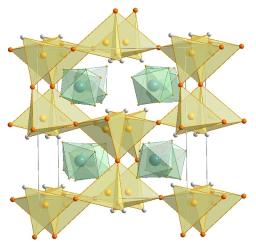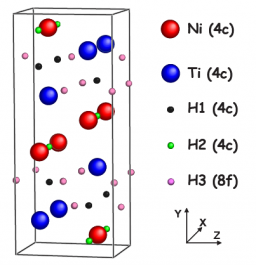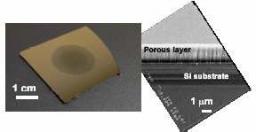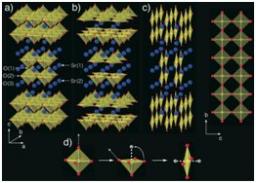Diffractomètres poudre (3T2, G41 et G61)
Description de la diffraction sur poudre


#524 - Màj : 06/06/2014
• Laboratoire Léon Brillouin (LLB)
• Nouvelles frontières dans les matériaux quantiques - NFMQ • Diffraction poudres
Voir aussi
In the pyrochlore compounds R2Mo2O7, both rare earth R3+ and M4+ transition metal ions form a threedimensional network of corner sharing tetrahedra. The pyrochlore lattice is geometrically frustrated both for antiferromagnetic (AF) and ferromagnetic (F) nearestneighbour exchange interactions, leading to intriguing magnetic states such as spin liquids, spin ices or chemically ordered spin glasses.
TiNi alloy is polymorphic. It exhibits a martensitic transition near room temperature between a cubic CsCl-type (austenite) and a monoclinic TiNi-type (martensite) structure. This transformation is at the origin of its shape memory effect. In addition, TiNi has good hydrogen storage properties under normal conditions of pressure and temperature. In austenic form, TiNi absorbs 1.4 H/f.u. under atmospheric pressure.
R. Guégan1, R. Lefort1, M. Guendouz2, I. Mirebeau3 and D. Morineau1
1Groupe Matière Condensée et Matériaux, UMR-CNRS 6626, Université de Rennes 1, 35042 Rennes, France
2 Laboratoire d’Optronique, FOTON, UMR-CNRS 6082, 22302 Lannion, France
3 Laboratoire Léon Brillouin (CEA-CNRS), CEA .
I.V. Golosovsky1, I. Mirebeau2, G. André2, D. A. Kurdyukov3, Yu. A. Kumzerov3,
1: St. Petersburg Nuclear Physics Institute, 188350, Gatchina, St. Petersburg, Russia
2: Laboratoire Léon Brillouin, CE-Saclay, F-91191, Gif-sur-Yvette, France
3: A. F. Ioffe Physico-Technical Institute, 194021, St. Petersburg, Russia
4: Rostov State University, 344090, Rostov/Don, Russia
The properties of magnetics confined in nanometer scale cavities drastically differ from those in the bulk material.
The concept of "spin ladder" originally appeared to study the theoretically still controversial antiferromagnet (AF) 2D square lattice in high temperature superconducting cuprates starting from a well understood 1D AF chain [1-2]. They can been schematized as an array of finite number of coupled chains .





















